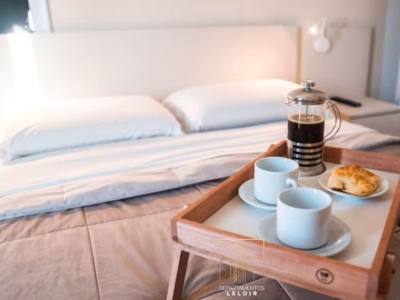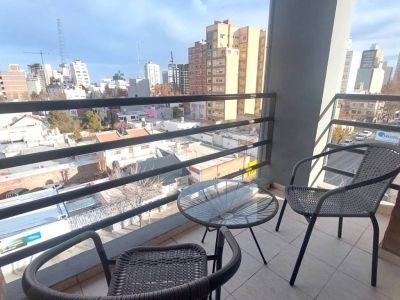
Recently remodeled, the Gregorio Álvarez Museum displays its valuable archeological collection and represents a cultural space once again.
Tightly related with the history of the City of
Neuquén, the Gregorio Álvarez Museum reopened its gates in May 2007, after one year of intense refurbishing works during which it had remained closed. Featuring a new educational circuit and archeological pieces, this significant cultural space in the capital of Neuquén is rescued once again. The Gregorio Álvarez was created in 1986 in a building from the early XX century which used to house the workshops of the railway company called “Ferrocarril del Sud”. Built by the English in 1901, it still preserves its original façade and some magnificent stained glass, which has also been restored.

In 1993, the government of the province granted the former railway facilities known as
Parque Central, including the Álvarez Museum, in favor of the town municipality. Afterwards, in 2000, it was the temporary venue for the Neuquén Fine Arts National Museum. In that opportunity, its rooms displayed works by Julio Le Parc; 160 engravings by Francisco de Goya belonging to his shows called
"Caprichos" (Whims) and
"Estragos y desastres de la guerra" (Ravages and Disasters of War). Other shows include the I International Art Biennial Exhibition, the collection called
"Diálogo con Neuquén" (Dialogue with Neuquén) (made up by national plastic artists) and the event known as
"Imágenes y Cultura del XX: la fotografía" (Images and Culture of the XX: photography), with works by the prestigious photographer Annemarie Heinrich. At present, the Gregorio Álvarez presents exhibitions once again, among other heritage collection, its important archeological show dating from over 7 thousand years ago. This real treasure was discovered at
estancia Haichol, to the West of the District of Las Lajas, in the Province of Neuquén.

Likewise, one of the novelties about the modernized institution is one area specially designed for educational visits, where the children may play at being archeologists. Two areas with archeological replicas buried in the sand are the stage for young scientists to discover, study and label the pieces just like they would in real research. This is done in order to stress the pedagogical sense of the visit and give a higher value to the scientific findings that took place in the region.

Like in the past, the cultural proposal carried out by the museum includes new traveling exhibitions and an innovative space where the popular celebrations of the province will be projected for the entire audience. Thus, reconditioned and with new strength, the brand-new Gregorio Álvarez Museum once again joins the museological circuit in the city, which is completed by the City Museum, Saraco Room and the Fine Arts National Museum, of course.

Source: Municipality of Neuquén and Río Negro Newspaper































